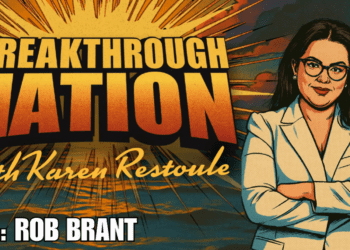This article originally appeared in the National Post.
By Steve Lafleur and Josef Filipowicz, September 4, 2023
Housing is an emotional issue. The concept of home evokes security, well-being and belonging. So it’s no surprise that housing debates have become politically charged as housing affordability has eroded. This can also evoke radical proposals for change.
Some people argue that we can’t rely on the private sector to make housing affordable again for the middle class. They argue that adding more “luxury apartments” doesn’t move the needle on affordability. In their eyes we need more public housing — a lot more.
In our research for the Macdonald-Laurier Institute, published last month, we considered the popular idea of a large-scale public housing buildout. We found that under the most optimistic scenario, the costs of such a project would be enormous.
Assigning realistic costs to hypothetical housing units is an exercise fraught with peril. Where will we build them? Do we have access to land? At what price? What kind of administrative costs will come with it? And will all levels of governments forego fees and taxes traditionally levied on housing to make it happen?
For all these questions, we erred toward the most generous (maybe too generous) assumptions. We know the answers will be complicated and costly, but for this benchmarking exercise we wanted to establish the lowest plausible dollar figure to construct the minimum number of housing units that Canada needs. The answer: somewhere between $196 and $300 billion.
That’s a massive number. For context, the federal government’s revenues last year were pegged at $413.3 billion. Yet, despite all the assumptions we made, our estimate is likely still very low.
Settling on key cost figures isn’t easy; judgement calls are required. And, again, we erred on the side of caution. For example, how many housing units are needed across Canada? There are different estimates available. The Canada Mortgage and Housing Corporation projects that, by 2030, some 3.5 million homes will be required — over and above current projections. Another (lower) number is Canada’s statistic for households in core housing need. These are households that fall below specific standards of adequacy, suitability and affordability, and that spend more than 30 per cent of their pre-tax income to access housing that meets all three standards. In 2021, just over 1.5 million households met these criteria, so we chose to use this relatively low estimate to remain conservative.
Then there’s construction costs. Assuming this historic buildout program is rolled out soon, and as close as possible to those most in need, dense building types are the only way to quickly accommodate so many units within scarce urban land. We estimate the cost of building these housing types (13-to-39-storey apartment buildings) to be $272 per square foot, noting that this is a national average and will likely be lower than the true cost since most of the need is in larger, more expensive markets.
Using these assumptions and others gets us to our estimated cost range, depending on whether the goal is to house only renters in core housing need (roughly one million), or all households in core housing need (roughly 1.5 million).
As discussed, our cost projections for this hypothetical project is almost certainly on the low end. Governments own developable land in major cities, but enough to build out at least a million units with zero land costs? Probably not. And could a government oversee a million-plus-unit subsidized housing buildout without heavy administrative costs? No. But even in this wildly optimistic scenario, the numbers are staggeringly high.
Government-subsidized housing does play an important role in Canada, and should continue to. Poverty is often complex, and many households are more than a few hundred dollars short of making rent. It’s equally true that families earning six figures shouldn’t find themselves struggling to find or keep adequate shelter — but they are.
Restoring balance to the housing market means saying yes to housing projects, whether public or private. But we shouldn’t expect governments to house the middle class. Public housing should be targeted to the most vulnerable. The market can take care of the rest of us, if we let it.
Steve Lafleur is a public policy analyst who researches and writes for Canadian think tanks. Josef Filipowicz is an independent policy specialist focusing on urban land-use issues including housing affordability, taxation and municipal finance. This article was written for the Macdonald-Laurier Institute.






